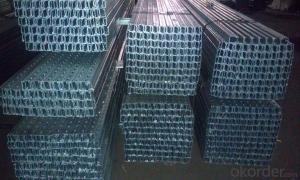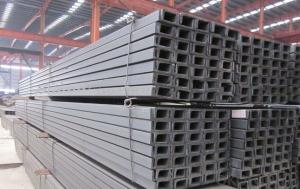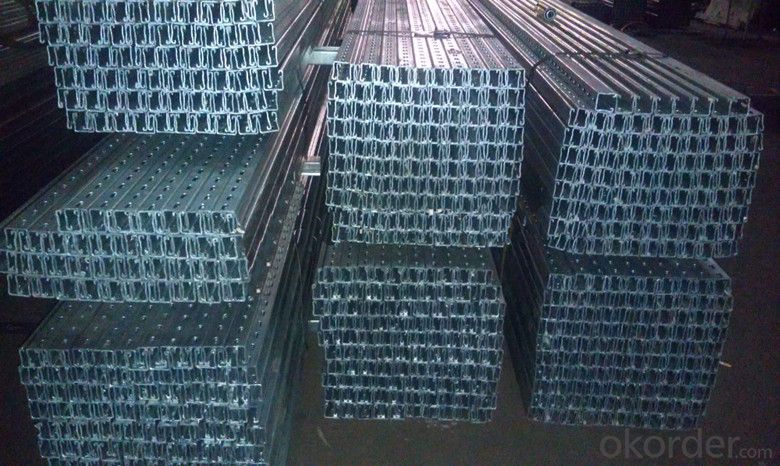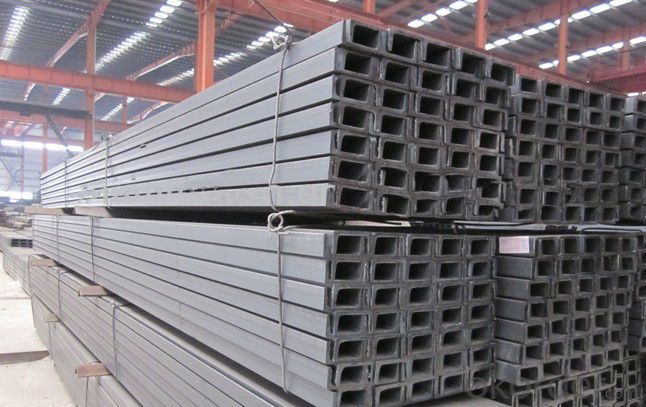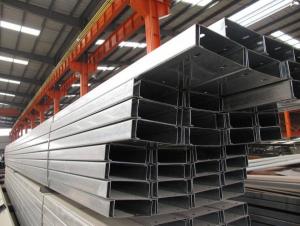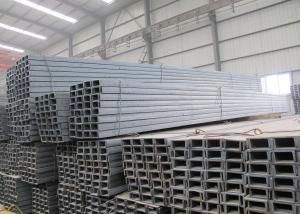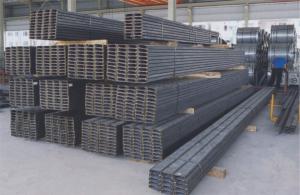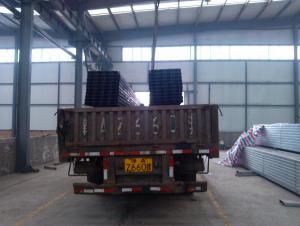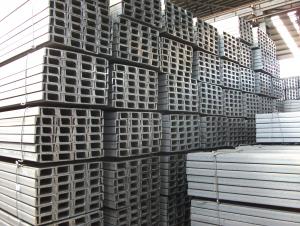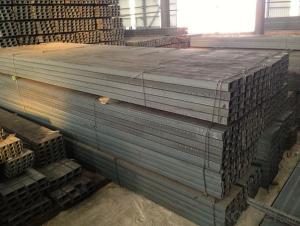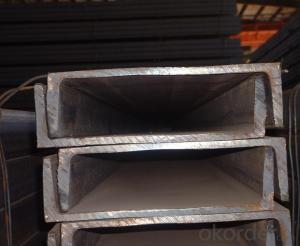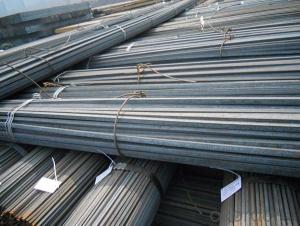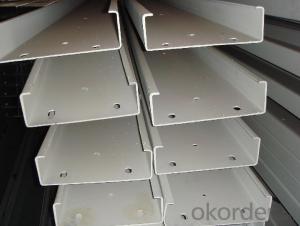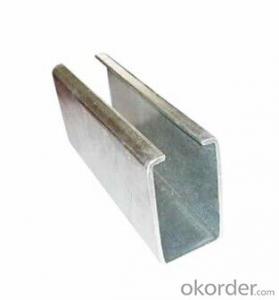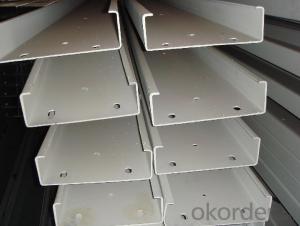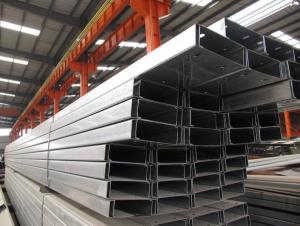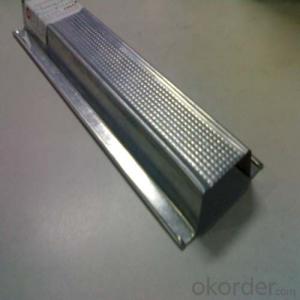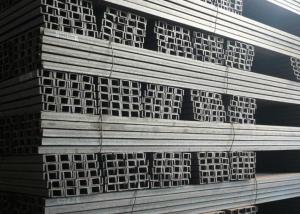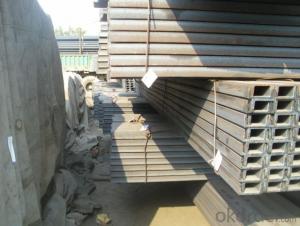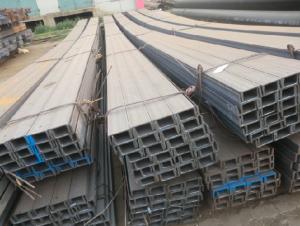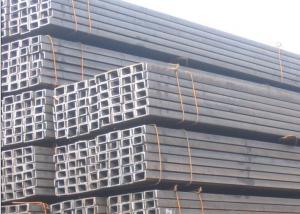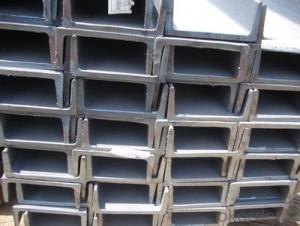C Steel Profile Channel Chinese supplier
- Loading Port:
- Shanghai
- Payment Terms:
- TT OR LC
- Min Order Qty:
- 2000 PCS
- Supply Capability:
- 40000 PCS/month
OKorder Service Pledge
OKorder Financial Service
You Might Also Like
Chinese supplier C Steel Profile Channel Details
Standard: | AISI,ASTM,BS,DIN,GB,JIS | Dimensions: | 41*41,41*21, 41x62,41x82 | Grade: | Aluminum |
Place of Origin: | China (Mainland) | Perforated Or Not: | Is Perforated | Model Number: | HM100t |
Shape: | C Channel | Application: | cable support |
Packaging & Delivery
Packaging Detail: | Packaging Detail: PALLET AS CLIENT REQUIREMENT Delivery Detail: 10-20DAYS |
Delivery Detail: | 20 Days |
Chinese supplier C Steel Profile Channel Specification
Strong anti-rusting
Heavy duty qualified
Free samples provided
Chinese supplier C Steel Profile Channel Description
Light-duty, medium-duty and heavy-duty can be qualified.
Any environmental condition can be applied due to its wide rang of surface treatment and materials options
It has a good ventilation.
Chinese supplier C Steel Profile Channel Pictures
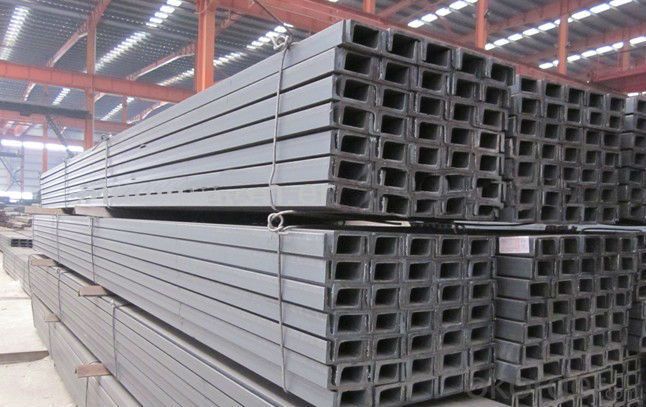
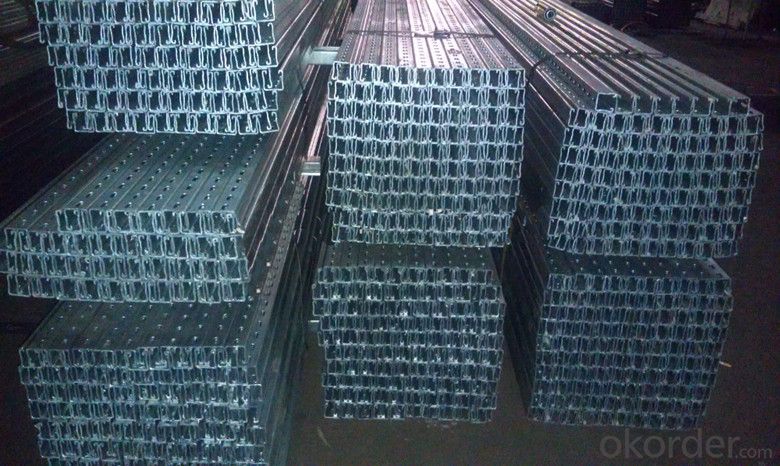
- Q: Is channel steel cold rolled or hot rolled?
- According to the channel shape and can be divided into 4 kinds: cold bending equilateral channels, cold-formed non equilateral channel steel, cold rolled edge channels, the cold bending edge channels
- Q: Overhanging Scaffold; channel spacing
- The rigid connection, then pull a small bar to deep inside the wall, in addition to fasten with the scaffold fastener and a large bar, but also with two 50cm steel tube short rectangular fastener is fixed on the wall, into the wall not less than 24cm.
- Q: What are the different methods of connecting steel channels?
- There are several different methods of connecting steel channels, depending on the specific application and structural requirements. Some of the common methods include: 1. Welding: This is one of the most popular methods of connecting steel channels. Welding involves melting the metal in the joint area and fusing it together. It provides a strong and permanent connection. Different types of welding techniques such as arc welding, MIG welding, and TIG welding can be used. 2. Bolting: Bolting involves using bolts, nuts, and washers to connect steel channels. Holes are drilled in the channels, and bolts are inserted through the holes and tightened with nuts. This method allows for easy disassembly and reassembly, making it suitable for applications where frequent adjustments or modifications are required. 3. Riveting: Riveting is a traditional method of connecting steel channels. It involves using rivets, which are cylindrical metal pins, to hold the channels together. The rivets are inserted through pre-drilled holes and then hammered or pressed to secure them. This method provides a strong and durable connection. 4. Adhesive bonding: Adhesive bonding involves using industrial adhesives or epoxy resins to bond steel channels. This method is often used when aesthetics are important, as it does not leave any visible fasteners. However, it may not be suitable for applications requiring high load-bearing capacity. 5. Mechanical connectors: These connectors are specially designed to connect steel channels without the need for welding or drilling. They typically consist of a clamp or bracket that can be secured to the channels using bolts or screws. Mechanical connectors provide a quick and easy method of connection, allowing for efficient installation and disassembly. Overall, the choice of connection method depends on factors such as the load-bearing requirements, structural design, ease of installation, and the need for adjustability or disassembly. Consulting with a structural engineer or a professional in the field is recommended to determine the most appropriate method for a specific application.
- Q: Are steel channels available in pre-galvanized finishes?
- Steel channels are indeed available in pre-galvanized finishes. Pre-galvanization involves coating the steel with a layer of zinc prior to shaping it into a channel. This zinc coat serves to prevent corrosion and enhance the durability of the steel channel. Pre-galvanized steel channels find wide application in construction, manufacturing, and infrastructure projects. The pre-galvanized finish guarantees protection against rust and other forms of deterioration, making it suitable for both indoor and outdoor usage.
- Q: Excuse me, when the high voltage cabinet is installed, should the base channel (10#) be placed upright or upside down? Are there any rules?
- Before installation, do the following work:(1) whether the roof and floor have been completed and whether there is leakage on the roof or floor;(two) whether the interior decoration project of power distribution room and equipment room has been fully completed?;(three), various embedded parts are installed, with equipment installation conditions;(four) whether the doors and windows of the room are installed and finished;(five) whether all the other processes which can not be carried out after the installation of the equipment have been completed are completed.
- Q: What are the applications of steel channels in construction?
- Steel channels have a wide range of applications in construction due to their strength, durability, and versatility. Here are some of the key applications of steel channels in construction: 1. Structural Support: Steel channels are commonly used to provide structural support in buildings, bridges, and other infrastructure projects. They can be used as beams or columns to carry loads and distribute weight effectively. 2. Framing: Steel channels are often used in framing applications, especially for walls, ceilings, and roofs. They provide a strong and reliable framework, ensuring the stability and integrity of the structure. 3. Staircases and Handrails: Steel channels are ideal for constructing staircases and handrails due to their strength and rigidity. They provide a safe and durable solution, especially in high-traffic areas. 4. Reinforcement: Steel channels can be used to reinforce concrete structures, such as foundations, walls, and slabs. By adding steel channels, the strength and load-bearing capacity of the concrete are significantly increased. 5. Mezzanine Floors: Steel channels are commonly used to create mezzanine floors, which provide additional space in buildings without the need for expanding the footprint. Steel channels offer a lightweight yet sturdy solution for supporting the floor structure. 6. Industrial Racks and Shelves: Steel channels are widely used in the construction of industrial racks and shelves. Their load-bearing capacity and durability make them suitable for storing heavy equipment, materials, and products. 7. Infrastructure Projects: Steel channels find extensive applications in large-scale infrastructure projects, including bridges, tunnels, and railways. Their high strength-to-weight ratio makes them ideal for withstanding heavy loads and resisting environmental factors. 8. Architectural Design: Steel channels are often used in architectural design to create unique and aesthetically pleasing structures. They can be shaped and welded into various configurations, allowing architects to bring their creative visions to life. Overall, steel channels play a crucial role in the construction industry, offering a reliable, durable, and versatile solution for various applications. Their strength, load-bearing capacity, and flexibility make them indispensable in modern construction projects.
- Q: What are the different quality control measures for steel channels?
- There are several quality control measures for steel channels that ensure their strength, durability, and overall quality. Some of these measures include conducting visual inspections to check for any defects or imperfections, performing dimensional checks to ensure accurate measurements, conducting mechanical tests to assess the strength and load-bearing capacity, and implementing surface treatment processes to prevent corrosion and enhance the appearance. Additionally, steel channels may undergo non-destructive testing methods such as ultrasonic or magnetic particle inspections to detect any internal flaws. Overall, these quality control measures help guarantee that steel channels meet the desired specifications and industry standards.
- Q: Can steel channels be used in temporary structures?
- Yes, steel channels can be used in temporary structures. Steel channels are strong and durable, making them a suitable choice for temporary structures that require stability and support. Additionally, steel channels can be easily assembled and disassembled, making them convenient for temporary structures that may need to be relocated or dismantled in the future.
- Q: Are steel channels customizable in terms of size and shape?
- Yes, steel channels can be customized in terms of size and shape to meet specific project requirements.
Send your message to us
C Steel Profile Channel Chinese supplier
- Loading Port:
- Shanghai
- Payment Terms:
- TT OR LC
- Min Order Qty:
- 2000 PCS
- Supply Capability:
- 40000 PCS/month
OKorder Service Pledge
OKorder Financial Service
Similar products
Hot products
Hot Searches
Related keywords
